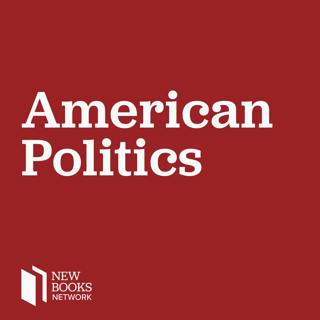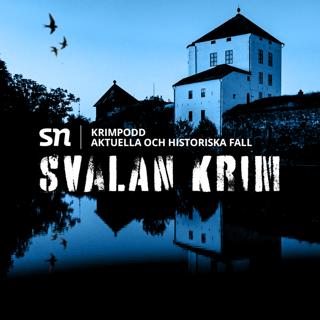
Daniel O. Prosterman, “Defining Democracy: Electoral Reform and the Struggle for Power in New York City” (Oxford UP, 2013)
Daniel Prosterman‘s new book Defining Democracy:Electoral Reform and the Struggle for Power in New York City (Oxford University Press, 2013) investigates a neglected topic in U.S. history: the occasional efforts by reformers over the years to bring proportional representation to America. No democracy in the world today is less representative by the standard of “one person, one vote.” (In 2000, three states with more than a quarter of the population, had just six Senators, for example. The seventeen least populous states, with seven percent of the population, had thirty-four.) This is actually an improvement over the past, when various mal-apportionment schemes essentially disenfranchised huge numbers of voters in virtually every state. Prosterman’s book does not look at the national scene, but takes us instead through New York City’s brief experiment with a quirky form “STV” (single transferable vote), the standard in most democracies. Like so many imported European reforms in the early 1900’s, the American version had a fraught experience. But as Prosterman painstakingly details it also invigorated the electoral system in New York, opening the field to an unusually diverse set of candidates for the time: women, blacks, even Communists. To the horror of even formerly sympathetic reformers, like Al Smith. In the end, an equally strange pack of bedfellows conspired to destroy the practice, which locals had voted for overwhelmingly. Yet, for all its flaws and historical particularities, the experiment stands as a useful reminder that democracy is now just about who votes, but how that vote is counted. Learn more about your ad choices. Visit megaphone.fm/adchoices
20 Dec 20141h 1min

Brian Purnell, “Fighting Jim Crow in the County of Kings” (UP of Kentucky, 2014)
Scholars interested in the history of the civil rights movement in the North will definitely be interested in Brian Purnell‘s new book, Fighting Jim Crow in the County of Kings:The Congress of Racial Equality in Brooklyn (University Press of Kentucky, 2014). Thiscase study of the Congress of Racial Equality (CORE) in Brooklyn joins one of the fastest-growing areas of research in the field: the roots and experience of the black freedom struggle above the Mason-Dixon. Challenging many of the nation’s persistent beliefs about the geographic timeline and ideological dynamics of that social movement, this literature has broadened our understanding of the past and given us a far more complicated view of the challenges facing grassroots organizations in the years before, during, and following the “classical period,” stretching from Rosa Parks’s arrest to Martin Luther King’s dream. Purnell looks at one of CORE’s most active, aggressive chapters in the North between 1960 and 1965. An exemplar of social history, the book explores the difficulties facing a small organization trying to upset the racial status quo in a city that prided itself on colorblindness–pioneering much of the legislation adopted by the federal government later–despite the fact that in education, housing, and labor segregation prevailed. Aggravating matters were a number of seismic changes in New York, as elsewhere: the flight of industry and middle class taxpayers to the suburbs and Sunbelt, and the influx of millions of laid-off southern sharecroppers to neighborhoods that, because of “de facto” Jim Crow, became increasingly poor,overcrowded, dilapidated, and ridden with trash, crime, and despair. Purnell gives us the story of a group valiantly attempting to avert and assuage these overwhelming developments. As he notes, their failures speak to the reality many still face today. Learn more about your ad choices. Visit megaphone.fm/adchoices
25 Nov 20141h 2min

Steven Conn, “Americans Against the City: Anti-Urbanism in the Twentieth Century” (Oxford UP, 2014)
Americans have a paradoxical relationship with cities, Steven Conn argues in his new book,Americans Against the City: Anti-Urbanism in the Twentieth Century (Oxford University Press, 2014). Nearly three-quarters of the population lives near an urban center, the result of a centuries-old, global trend that reflects not just industrialization but the role cities have played as engines of economic, social, cultural, intellectual, and political life. Yet two-thirds of this “metropolitan” demographic–half the nation–chooses to reside in the suburbs, and over the years a remarkably consistent and low number of people have said they would prefer to live in a city. This may just reflect circumstance, the outcome of policies that, historians know, were not smartly, and often undemocratically, imposed. But as Morton White recounted decades ago, the intellectuals of the past have been just as anti-urban as politicians. Despite the outsized importance of the seaboard port-cities to the War for Independence, the founders left a Constitution that divided power geographically, not numerically, ensuring that cities would be forever underrepresented. Jefferson expressed the feeling of many early republicans that we could only maintain our virtue and freedom by remaining a nation of small yeoman, even while doubling the country’s size and guaranteeing its commercial development. Henry David Thoreau, writing in a more democratic age, told readers to go to “the woods” to find individuality–from a cabin one mile outside Concord. This anti-urban tradition was briefly interrupted in the late 1800’s, when, as Conn writes, for the first time the problems of the city became the problems of the nation. Many Progressives advocated European-style planning to meet the challenges for which cities were infrastructurally unprepared and often governmentally powerless to resolve. But as Conn writes, many thinkers also continued to see the city itself as the problem, and saw the solution as decentralization: dispersing population and industry. During the interwar period, the car, and electricity, stepped in to meet their needs, and when the Great Depression hit, FDR and the New Dealers fell back on this generation of thought, coming forward with a battery of programs that would unravel the city–and the famous coalition he built. Indeed, while the anti-urban tradition has often been the vehicle for an illiberal free-market political agenda, Conn shows that it has covered the ideological spectrum. The postwar Right in the Sunbelt helped speed the decline of the industrial belt in the North by advertising its bourgeoning megalopolises as the antithesis of the urban: free of high-rises, zoning, civil rights protestors, unions, and government in general, even while it relied on billions in federal tax dollars, saw high rates in crime, and increasingly had to reverse itself and create basic municipal services. But the anti-urban sentiment cut across the aisle, from the enthusiasm of postwar liberals for “urban renewal” and highways to the hippies’ revival of the back-to-the-land fantasy and the flowering of 1990’s communitarianism. The nation’s anti-urban policies remain, as does the bipartisan impulse, which makes this book’s subject as relevant as ever. Perhaps, as Conn says, in this era of hip gentrification, when the children of the suburbs are returning to cities, the “new urbanists” will break internationally odd pattern. But they will have to grapple with the multidimensional legacy of the nation’s anti-urban past. And Conn’s intellectual and cultural history, the first of its kind, will be the place to start. Learn more about your ad choices. Visit megaphone.fm/adchoices
12 Nov 201455min

Brian Arbour, “Candidate-Centered Campaigns: Political Messages, Winning Personalities, and Personal Appeals” (Palgrave-MacMillan 2014)
As campaign season ends, what can we make of all those ads? Brian Arbour is the author of Candidate-Centered Campaigns: Political Messages, Winning Personalities, and Personal Appeals (Palgrave-MacMillan 2014). Arbour is assistant professor of political science at John Jay College, City University of New York. Why do certain candidates focus on making campaign promises and extolling their legislative record, while others just talk about themselves? Arbour argues that scholars have underplayed the personal narratives that feature so prominently in much campaign advertising. As a result, candidate-centered appeals for votes have been largely ignored or misunderstood. Arbour aims to address this deficit with his new book that examines the way candidates talk about their own background and the background of opponents. He argues that candidate-centered campaigns build trust with voters as one would with neighbors or new co-workers. Learn more about your ad choices. Visit megaphone.fm/adchoices
3 Nov 201419min

Terry Golway, “Machine Made: Tammany Hall and the Creation of Modern American Politics” (Liveright, 2014)
For most Americans, Tammany Hall is a symbol of all that was dishonest, corrupt, illiberal, and venal about urban government and the political machines that ran it in the past, a shorthand for larceny on a grand scale. Not so, says Terry Golway. In his new book Machine Made: Tammany Hall and the Creation of Modern American Politics (Liveright, 2014) Golway argues that Tammany, a popular nickname for the Democratic organization of the County of New York (better known as Manhattan), introduced a “new politics” and a “new social contract” to America. Tammany, he shows, encouraged voters in an undemocratic republican era to look to accessible local figures for protection from the devastations of laissez-faire capitalism in a time before the safety net. Arguing that the Irish who escaped the potato famine brought with them lessons about the importance of power and the usefulness of “transactional” relationships between voters and elected officials, Golway believes that Tammany came to represent the modern way of practicing democracy: interest-based politics. While many of its flaws cannot not be denied, he writes, the popular narrative has also been shaped by the reformers of the past, who tended to mix their critiques with class-based fear and moralism, if not outright anti-immigrant, anti-Catholic, anti-urban sentiment. William “Boss” Tweed personifies the organization for most, although his reign lasted just two years. A better representative, Golway thinks, is Charles Murphy, the longest-running leader of the party chapter, and the man who nurtured the careers of two young legendary, nation-changing reformers, and proud Tammany men: Robert Wagner and Al Smith, forerunners and major architects of the New Deal. Sure to stir a little debate, Golway’s book is revisionism in a good spirit. Learn more about your ad choices. Visit megaphone.fm/adchoices
31 Okt 201454min

Matthew Huber, “Lifeblood: Oil, Freedom, and the Forces of Capital” (U of Minnesota Press, 2013)
Lifeblood: Oil, Freedom, and the Forces of Capital (University of Minnesota Press, 2013) is an incisive look into how oil permeates our lives and helped shape American politics during the twentieth century. Author Matthew Huber shows the crucial role oil and housing policy played in the New Deal and how, in subsequent decades, government policies drove many Americans to the suburbs and increased their dependence on petroleum. Although such policies were central to suburbanization, Americans in these new neighborhoods tended to forget this fact, and instead, saw their success in the suburbs as the outcome of private achievements. Over time, such places became the crucible for the growth of neoliberalism. Lifeblood demonstrates the role oil played not only in suburbanization, but in the rightward shift of American politics over the past four decades. Learn more about your ad choices. Visit megaphone.fm/adchoices
17 Okt 201443min

Marci A. Hamilton, “God vs. the Gavel: Religion and the Rule of Law” (Cambridge UP, 2014)
The constitution guarantees Americans freedom of religious practice and freedom from government interference in the same same. But what does religious liberty mean in practice? Does it mean that the government must permit any religious practice, even one that’s nominally illegal? Clearly not. You can’t shoot someone even if God tells you to. Does it mean, then, that religious liberty is a sort of fiction and that the government can actually closely circumscribe religious practice? Clearly not. The government can’t ban a putatively religious practice just because it’s expedient to do so. So where’s the line? In God vs. the Gavel: The Perils of Extreme Religious Liberty (Cambridge University Press, Second Edition, 2014), Marci A. Hamilton argues that it’s shifting rapidly. Traditionally, the government, congress, and courts agreed that though Americans should enjoy extensive religious freedom, that freedom did not include license to do anything the religious might like. A sensible accommodation between church and state had to be made so that both the church and state could do their important work. According to Hamilton, in recent decades radical religious reformers have mounted a successful campaign to throw the idea of a sensible accommodation out the window. They have expanded the scope of religious liberty and thereby limited the ability of the government to protect citizens generally. In this sense, she says, religion–a force for great social good, in her mind–has been made into an instrument of harm for many Americans. Listen in. Learn more about your ad choices. Visit megaphone.fm/adchoices
7 Juni 201459min

Dede Feldman, “Inside the New Mexico Senate: Boots, Suits, and Citizens” (University of New Mexico Press, 2014)
Dede Feldman is the author of Inside the New Mexico Senate: Boots, Suits, and Citizens (University of New Mexico Press, 2014). Feldman retired from the New Mexico Senate in 2012 and is a former journalist and now is a political commentator in Albuquerque. Feldman provides a first-hand account of the state legislative process. Her colorful stories of many legends of New Mexico politics reveal the complexity of a part-time legislature. She ends the book with an array of ideas to reform the institution and limit some of the forces she sees as destructive and harmful. The book would make an excellent addition to an undergraduate course in State and Local Government. Learn more about your ad choices. Visit megaphone.fm/adchoices
12 Maj 201422min





















